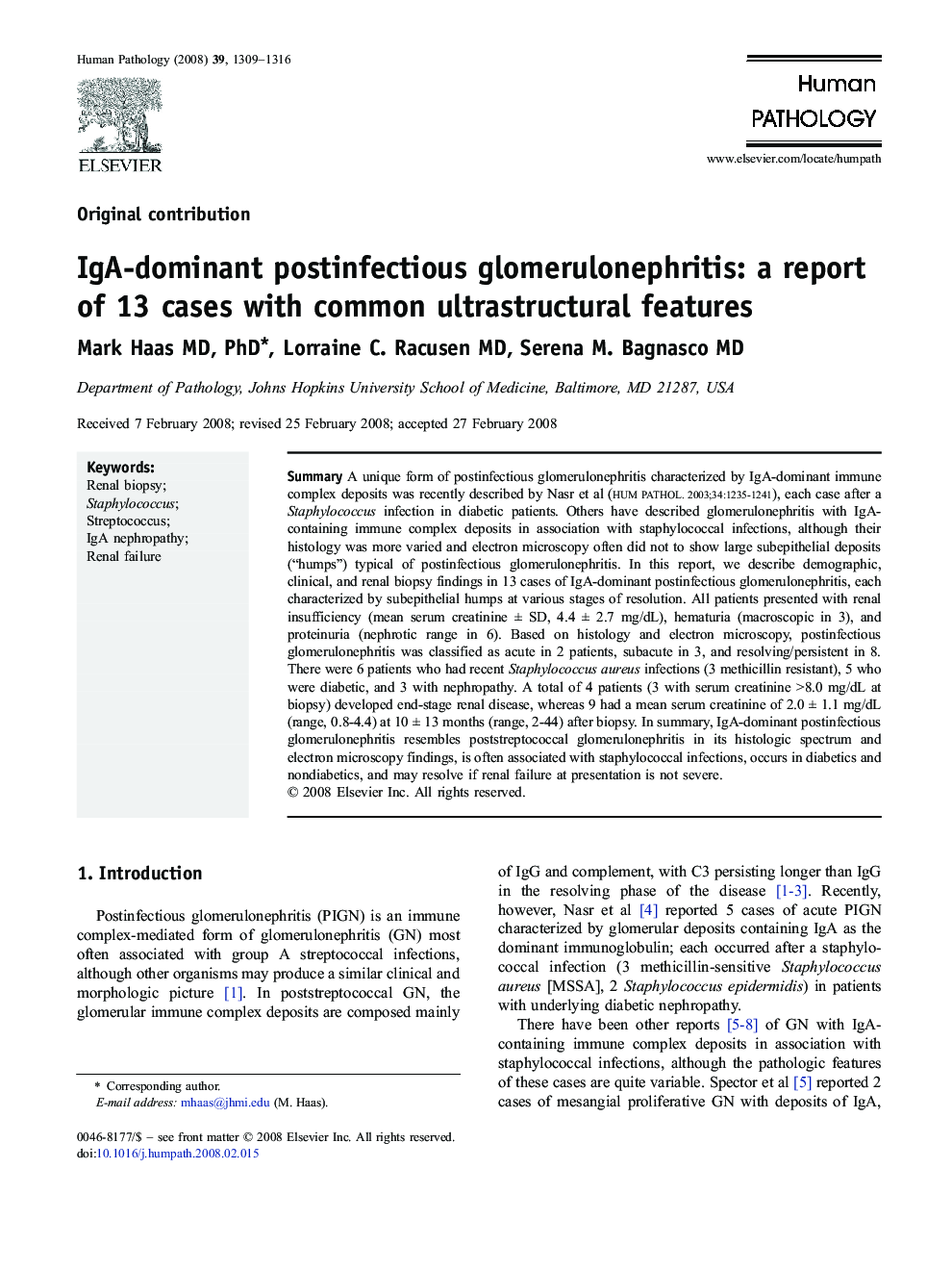| Article ID | Journal | Published Year | Pages | File Type |
|---|---|---|---|---|
| 4135294 | Human Pathology | 2008 | 8 Pages |
SummaryA unique form of postinfectious glomerulonephritis characterized by IgA-dominant immune complex deposits was recently described by Nasr et al (Hum Pathol. 2003;34:1235-1241), each case after a Staphylococcus infection in diabetic patients. Others have described glomerulonephritis with IgA-containing immune complex deposits in association with staphylococcal infections, although their histology was more varied and electron microscopy often did not to show large subepithelial deposits (“humps”) typical of postinfectious glomerulonephritis. In this report, we describe demographic, clinical, and renal biopsy findings in 13 cases of IgA-dominant postinfectious glomerulonephritis, each characterized by subepithelial humps at various stages of resolution. All patients presented with renal insufficiency (mean serum creatinine ± SD, 4.4 ± 2.7 mg/dL), hematuria (macroscopic in 3), and proteinuria (nephrotic range in 6). Based on histology and electron microscopy, postinfectious glomerulonephritis was classified as acute in 2 patients, subacute in 3, and resolving/persistent in 8. There were 6 patients who had recent Staphylococcus aureus infections (3 methicillin resistant), 5 who were diabetic, and 3 with nephropathy. A total of 4 patients (3 with serum creatinine >8.0 mg/dL at biopsy) developed end-stage renal disease, whereas 9 had a mean serum creatinine of 2.0 ± 1.1 mg/dL (range, 0.8-4.4) at 10 ± 13 months (range, 2-44) after biopsy. In summary, IgA-dominant postinfectious glomerulonephritis resembles poststreptococcal glomerulonephritis in its histologic spectrum and electron microscopy findings, is often associated with staphylococcal infections, occurs in diabetics and nondiabetics, and may resolve if renal failure at presentation is not severe.
